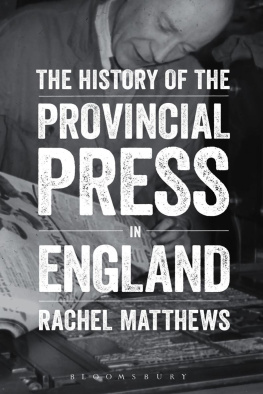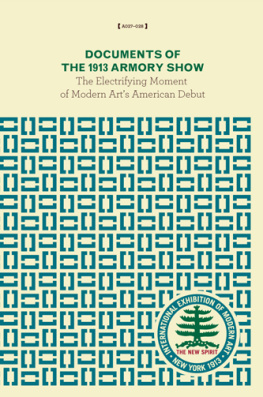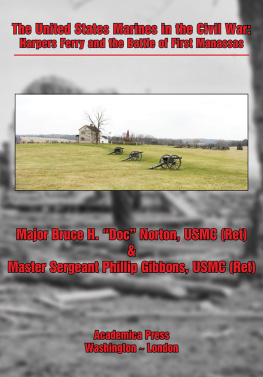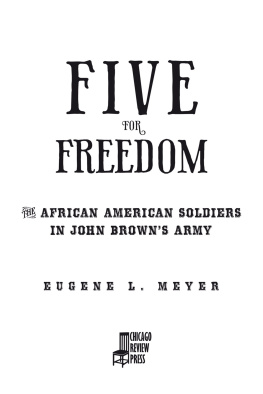Harpers Ferry Armory
and the New Technology
THE CHALLENGE OF CHANGE
MERRITT ROE SMITH
Cornell University Press ITHACA AND LONDON
For Wilson N. Smith (19061962),
father and friend
Acknowledgments
Like most authors, I owe many debts. I am deeply grateful to my family for longstanding encouragement and support; to Philip S. Klein for first kindling my interest in the history of technology; to Albert Blair and Sara D. Jackson for leading me to many untapped resources at the National Archives; to Agnes B. Cadwell, Martin R. Conway, B. Franklin Cooling, Benjamin Davis, Rodney A. Pyles, Stephen T. Riley, Judith A. Schiff, Hilda E. Staubs, and Juliette Tomlinson for similar favors during the course of research; to Harold J. Bingham for kindly allowing access to the James T. Ames Papers at his home; to Edwin A. Battison for patient tutorage and incisive commentary on many points of technical detail; to Charles B. Dew, Eugene S. Ferguson, Hugo A. Meier, Glenn Porter, and Nathan Rosenberg for reading the manuscript at various stages and offering invaluable recommendations; to Charles Christenson for help in constructing the tables; to Bronwyn M. Mellquist for perceptive criticism and countless hours of fine editorial assistance; to Jane Dieckmann for further aid in the preparation of the manuscript; to Les Benedict, John C. Burnham, June Z. Fullmer, Myron Hedlin, W. David Lewis, Allan R. Millett, and Warren Van Tine for friendly counsel and innumerable insights into the historians craft. All these people and more have helped immeasurably to shape my thoughts and fashion this presentation.
This book contains material, considerably revised and expanded, from my earlier essays in the Virginia Magazine of History and Biography 81 (1973), Technology and Culture 14 (1973), and Technological Innovation and the Decorative Arts , Winterthur Conference Report 1973 (Charlottesville: University Press of Virginia, 1974). I am indebted to the editors of these publications for permission to reprint certain passages in the present text. Lastly, I wish to acknowledge the generous support of the Smithsonian Institution, which made eighteen months of uninterrupted research possible.
MERRITT ROE SMITH
Columbus, Ohio
Contents
Illustrations
MAP
FIGURES
TABLES
1. Output, size of labor force, and unit costs at the Harpers Ferry Armory (main branch), 18011860
2. Arms and accessories manufactured at the Hall Rifle Works, 18191844
Abbreviations
| AAR | Records of the Allegheny Arsenal (Record Group 156, National Archives) |
| AGO | Records of the Adjutant Generals Office (Record Group 94, National Archives) |
| GAO | Records of the United States General Accounting Office (Record Group 217, National Archives) |
| HFNP | Harpers Ferry National Historical Park |
| HR | Records of the United States House of Representatives (Record Group 233, National Archives) |
| JAG | Records of the Office of the Judge Advocate General (Record Group 153, National Archives) |
| NPS | Records of the National Park Service (Record Group 79, National Archives) |
| OCO | Records of the Office of the Chief of Ordnance (Record Group 156, National Archives) |
| OIG | Records of the Office of the Inspector General (Record Group 159, National Archives) |
| OQG | Records of the Office of the Quartermaster General (Record Group 92, National Archives) |
| OSW | Records of the Office of the Secretary of War (Record Group 107, National Archives) |
| PGW | Papers of George Washington (Library of Congress) |
| RPO | Records of the Patent Office (Record Group 241, National Archives) |
| SAR | Records of the Springfield Armory (Record Group 156, National Archives) |
| USS | Records of the United States Senate (Record Group 46, National Archives) |
Introduction
The labouring classes [of America] are comparatively few in number, but this is counter-balanced by, and indeed may be regarded as one of the chief causes of, the eagerness with which they call in the aid of machinery in almost every department of industry. Wherever it can be introduced as a substitute for manual labour, it is universally and willingly resorted to. It is this condition of the labour market, and this eager resort to machinery wherever it can be applied, to which, under the guidance of superior education and intelligence, the remarkable prosperity of the United States is mainly due.
These comments by the noted British engineer and machine builder Joseph Whitworth typified European opinion of American industrial development in the mid-nineteenth century. By 1854, the date of Whitworths special report to Parliament, many observers had detected similar trends in the American economy. What fascinated them was not so much that the people of the United States had adopted the new machine technology, but rather that they had done it with such little difficulty. Whitworth, whose memory of labor riots and machine breaking in Regency England remained vivid, expressed amazement at the propensity of Americans to favor the adoption of machinery. The workmen hail with satisfaction all mechanical improvements, he wrote, the importance of whichthey are enabled by education to understand and appreciate. In Whitworths judgment a liberal system of public education coupled with a scarcity of labor in the United States
Other visitors witnessed the same phenomenon, but advanced different explanations. To the Frenchman Alexis de Tocqueville, by no means an uncritical observer, Americas industrial potential rested with her democratic institutions and inbred utilitarian attitudes. Charles Dickens detected similar traits, while C. L. Fleischmann, a German bureaucrat who spent several years in the United States as an employee of the Patent Office, and his compatriot Francis Grund ascribed industrial progress to the countrys wealth of natural resources and enterprising spirit of its citizenry. Others found the seeds of industry deeply implanted in the lure of the wilderness, the majesty of personal freedom, native genius, disdain for liberal science, economic necessity, a compulsive search for national identity, vanity, love of change, and an unabated eagerness to get on. Yet, whatever the reason, everyone agreed that mechanization had found a most favorable environment in North America.
By the 1850s the United States no longer remained the relatively simple, homogeneous society once exalted by Thomas Jefferson and other disciples of agrarian democracy. Having achieved a high degree of mechanical proficiency and having entered a period of sustained economic growth, the young republic had relinquished its abject dependency on European technology and no longer stood in awe of the Old Worlds industrial prowess. So thorough was this transition that European enterprisers, impressed by American manufacturing
Even more indicative of the changes taking place was the impressive debut of American metalworking technology at the 1851 Crystal Palace Exhibition in London. Here for the first time little-known manufacturers impressed visitors with the precision design and functional simplicity of their machine-made products. Exciting considerable comment and admiration were the unpickable padlocks of Alfred C. Hobbs of New York, Samuel Colts revolving pistols, and six completely interchangeable rifles made by Robbins & Lawrence, an obscure firearms and machine company in Windsor, Vermont. All three firms won prizes at the exposition, but more significantly the excellence of their wares prompted the British government to send Joseph Whitworth and five other commissioners to New Yorks Crystal Palace Exhibition and, from there, on a fact-finding tour of the northeastern section of the country during the summer of 1853. The following spring Her Majestys Ordnance Board, eager to take advantage of the so-called American System of interchangeable production, dispatched another three-man Committee on Machinery to the United States for the express purpose of introducing similar improvements at the Enfield armory near London. By the time the investigators returned home in August 1854, they had placed orders for over $105,000 worth of machinery with seven different firms, five of which were located in New England. Within four years several other foreign governments sent similar investigatory teams to the United States. Although little noticed at the time, these events signaled Americas coming of age as an industrial power.









